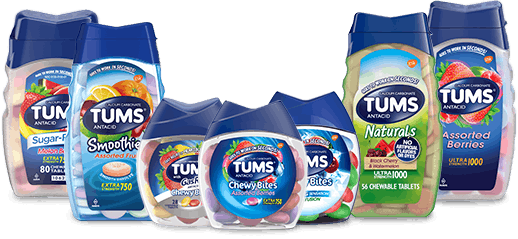Heartburn and Exercise: Everything You Need to Know
Ever wondered why after a great workout your endorphin high gets interrupted by a burning in your chest? You’re not alone—heartburn after exercise is something many people experience at one time or another. Below, we’ll discuss the link between heartburn and exercise, including why exercise leads to heartburn, what exercises are safer for those that have GERD (gastroesophageal reflux disease) or experience frequent heartburn, and the importance of exercise for digestive health. Put on your workout gear and let’s get going!
Heartburn After Exercise—What’s the Deal?
Whether your activity of choice is jogging, playing tennis, Pilates, or swimming laps, exercising directly after meals is a surefire way to trigger discomfort.1 Just like you shouldn’t lie down within three hours of eating to avoid acid reflux, you should also wait a couple of hours before exercising or engaging in high-intensity activity to give your stomach adequate time to empty.1 Heartburn occurs when your lower esophageal sphincter (LES) does not close tightly enough to prevent food and acid from backing up into your esophagus, which irritates the esophagus and therefore triggers the burning sensation called heartburn.2
In addition to any kind of exercise, bending over and lying down too soon after eating can also trigger heartburn.2 If your exercise of choice involves either of these motions, it’s doubly important to wait a generous amount of time before engaging. When you lie down with a full stomach, the contents of your stomach press against your LES harder than they normally would, which can trigger acid reflux.2
Another factor that can increase the likelihood of heartburn is wearing clothes that are too tight or fit snuggly around the waist. If you wear tight-fitting workout gear, then this is another important aspect to consider! Clothing that is too tight, especially around the waist, can put undue pressure on your stomach, causing food to reflux.2
In conclusion, if you think you’re experiencing heartburn after exercise, you’re not making it up! Make sure to wait enough time, around two to three hours, before getting started in order to avoid the discomfort of heartburn after working out.
Why Exercise Is Important for Digestive Health
While exercising directly after mealtime is something that can trigger heartburn symptoms, putting off exercise altogether is not the solution. Being overweight has been linked to heartburn, as obesity can increase pressure in the stomach, which causes acid reflux. In fact, losing weight if you are overweight is one potential solution to mitigating heartburn or GERD symptoms and some have reported that losing 10 to 15 pounds (or 4.5 to 6.75 kilograms) has made their GERD symptoms disappear entirely.2
Even if you’re not overweight, maintaining a healthy weight is important for overall health and wellness, which means following a healthy diet and engaging in regular exercise are key.3 An active lifestyle is important for digestive health in general and practices like briskly walking for 20 to 30 minutes four times a week can help keep other digestive functions running smoothly, including supporting bowel function and reducing bloating.3 What’s more, exercise can also help you manage stress, which is another cause of digestive issues.3 In general, squeezing in 15 to 30 minutes of moderate exercise every day is a simple lifestyle modification that can help reduce your heartburn symptoms.4 Talk to you doctor about exercise and other lifestyle modifications that are appropriate for your individual situation.
Exercises for Heartburn
Now that we’ve made the case for exercise, you might be wondering about specifics. As mentioned, getting enough exercise is essential for overall health, but certain types of exercise can put pressure on your stomach and may trigger acid reflux. Some yoga poses, such as headstands and downward dog, for instance, invert the body and may contribute to stomach contents backing up into the esophagus. Intensive abdominal exercises, like sit-ups, put pressure on the stomach which can cause acid reflux and heartburn symptoms as well.5 If you have your heart set on yoga or Pilates, talk to your doctor about how you can practice these kinds of workouts safely in a way that won’t trigger acid reflux.
Since stress is a trigger for heartburn, exercises that provide moderate activity levels in addition to helping reduce stress are our favorite. One such exercise is tai chi.2 Tai chi is an ancient Chinese practice that combines gentle movements and postures with breath work, relaxation, and mental focus. Tai chi can be practiced sitting, standing, or walking, and, when done quickly, can also be a type of self-defense.7 Plus, the mental and physical benefits of tai chi are many—studies have shown that tai chi can help improve balance and stability, reduce back and knee pain, improve reasoning ability in people who are older, and increase quality of life for those living with cancer, heart disease, and other chronic illnesses.7
We hope this article has helped you better understand the link between heartburn and exercise. For additional resources, check out more articles on heartburn from TUMS.
SOURCES
- 8 ways to quell the fire of heartburn. Harvard Health Publishing. https://www.health.harvard.edu/staying-healthy/8-ways-to-quell-the-fire-of-heartburn . Accessed 10/30/20.
- Heartburn. MedlinePlus. https://medlineplus.gov/ency/article/003114.htm Accessed 10/30/20.
- Steps to boost digestive health. HealthySD.gov. https://healthysd.gov/link_steps-to-boost-digestive-health/. Accessed 10/30/20.
- Heartburn. Penn State College of Medicine. https://research.med.psu.edu/oncology-nutrition-exercise/patient-guides/heartburn/. Accessed 10/30/20.
- Health Update: Heartburn Causes and Remedies. City of Quincy. https://www.quincyma.gov/news/displaynews.htm?NewsID=724&TargetID=1 . Accessed 10/30/20.
- Tai Chi and Qi Gong: In Depth. National Center for Complementary and Integrative Health. https://www.nccih.nih.gov/health/tai-chi-and-qi-gong-in-depth. Accessed 10/30/20.


